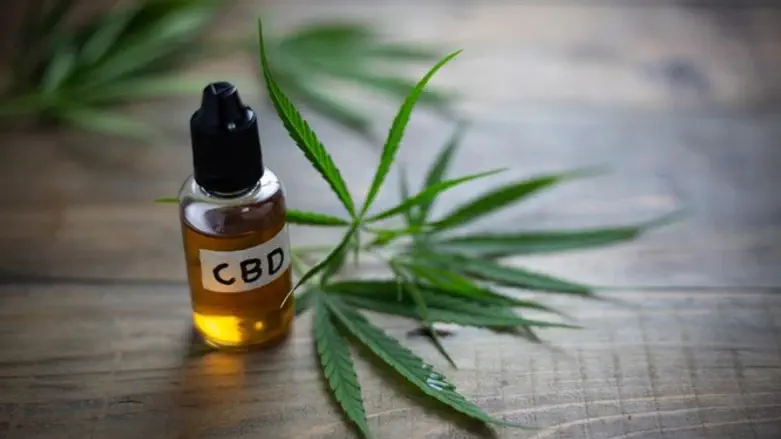
CBDA is cannabidiolic acid. It is one of the many compounds found in cannabis and hemp. CBDA is abundant in live plants and converts to the better-known cannabidiol
Neither CBDA or CBD has psychoactive effects on the brain so they will not get you high the way THC does. While they do share some similarities, there are some differences to note.
CBDA is a precursor to CBD. If you look closely at fresh hemp, you would find little CBD and high amounts of CBDA. CBD only becomes a thing when raw hemp is heated to cause decarboxylation. Decarboxylation is the chemical action that removes a carboxyl group.
The decarboxylation process happens when you heat CBDA to approximately 270 degrees Fahrenheit. This process releases carbon dioxide and unlocks the CBD to produce its benefits. Some decarboxylation comes with curing and drying, but smoking accelerates the process with high heat. However, users with respiratory problems, senior citizens, and others either cannot or will not inhale the smoke.
More often than not, the decarboxylation process occurs naturally as a plant ages because of exposure to light and heat from the sun or when it is burned like when it is smoked or placed in the oven. The same process occurs for nearly all of the cannabinoids. This is true of THC as well. Before you have THC, you have THCA which is not psychoactive at all. Without decarboxylation, you won't get any psychoactive reaction.
In the past, it was thought that unless you heated the raw hemp to transform CBDA into CBD, there was no therapeutic benefit. However, it is true that much more scientific research has been performed on CBD than CBDA.
Now, CBDA is becoming a cannabinoid of Interest and its own right, though right now we know little about CBDA compared to CBD. That's why plenty of CBD oil products contain both CBD and CBDA.
Though CBDA is labeled as pharmacologically inactive, meaning that it has no benefits, early studies show that CBDA has potent effects against nausea and vomiting in a lab setting. A 2013 animal study explored not only CBDA’s ability to reduce nausea and vomiting but also its potential to enhance relevant 5-HT1A receptor activation.
Researchers noted that compared with cannabidiol, CBDA displays significantly greater potency at inhibiting vomiting and shrews and nausea and rats. They also concluded that CBDA was better at enhancing 5-HT1A receptor activation as well as possibly treating anticipatory nausea
Both CBD and CBDA are suitable for healthcare use because they do not make users feel high. They do have similar health benefits but the compounds are not identical in terms of their therapeutic effects. Decarboxylation activates certain dormant medical properties of CBDA, but also causes the loss of terpenes. CBD provides a wider range of health benefits, but it doesn't offer as many terpene related benefits.
Studies have shown that CBD can help improve general well-being and help treat a variety of health problems including:
Acne
Addiction
Alzheimer's disease
Anxiety
Cancer
Depression
Diabetes
Epilepsy
Heart disease
Inflammation
Insomnia
Multiple sclerosis
Parkinson's disease
Nausea and vomiting
Stroke
CBDA has gotten significantly less attention from the research community in comparison to CBD. Because of this, the true potential of CBDA is relatively unknown at this time. However, experts have discovered that it can help treat a number of health conditions so far including:
Research has shown that CBD and CBDA provide the best results when they work together. This is especially the case if the condition is a result of the improper regulation of multiple systems throughout the body. Recent studies have shown that CBDA can help enhance the potency of CBD so that users can take smaller amounts while retaining the same level of effectiveness.
4. CBDA is Harder to Find
Given the demand for recreational use cannabis and medical cannabis in states where it is legal, breeders, farmers, and providers typically don't target CBDA markets. Because of this, they don't always breed cannabis for its CBDA potential.
Raw uncured marijuana can be difficult to find. Even in areas where it is legal, it may not be possible to find it in local dispensaries. If you do, sore raw cannabis leaves or flowers in the refrigerator just as you would any leafy green vegetable.
You can find CBDA in raw CBD products such as raw hemp extracts, raw CBD oils, or whole plant products like CBD flower or whole plant juices. Tinctures, oils, and paste with a mixture of CBD and CBDA are becoming more popular, and as that popularity grows, you can expect them to become more widespread.
Both CBD and CBDA have a positive impact on the body's endocannabinoid system which is designed to regulate the balance and immune response, metabolism, mood, cellular communication, and other important bodily functions. They don't interact directly with the main receptors of the endocannabinoid system but they both can activate and inhibit other receptors to keep the body healthy.
The best CBD oil reacts with adenosine, serotonin, and vanilloid receptors that mediate pain, anxiety, depression, inflammation, and other conditions. CBD also inhibits the CPR55 receptor to improve blood pressure, bone density, and the body's cancer-fighting abilities.
CBDA, on the other hand, works by blocking the activities of receptors that are responsible for causing inflammation such a COX-1 and COX-2. This is also how many anti-inflammatory medications such as ibuprofen work. Because CBDA blocks the receptors that cause inflammation, it can help reduce inflammation, seizures, and symptoms of a number of diseases.
To get the greatest benefit from both CBD and CBDA, opt for a broad-spectrum CBD oil that has only removed the THC, so all the terpenes and other ingredients are still present. If THC content is not a concern, you can opt for a full-spectrum CBD oil.